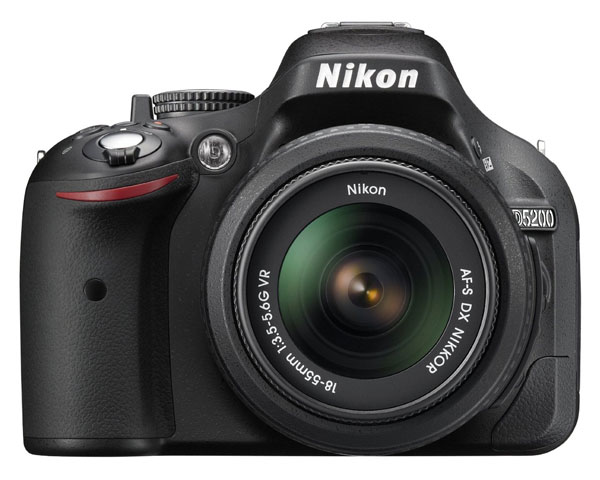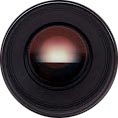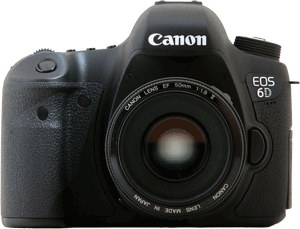Nikon D5200 Features
The Nikon D5200 features more than enough megapixels for photographers who enjoy large prints or who want the freedom to crop.
The D5200 replaces the older D5100 (released date: April 2011) and it increases the megapixel count from a "mere" 16 to a substantial 24.
Before you run out and swipe your credit card for a new D5200 you should ask yourself: is a high megapixel count something I need?
The answer is a definite NO if all you want to do is send pictures via email to friends, upload to Facebook or print at 8x10 or smaller sizes. For all this, a lower megapixel count will actually suit you better.
However, if you want to enlarge your images (poster-size) OR you find that you don't always quite compose images perfectly and want to cut out large portions of your photo and STILL print at 8x10, then the D5200 may be just right.
It's important to note that this camera isn't just about megapixels: the Nikon D5200 features a 39-point autofocus system, a flexible 3 inch LCD screen, and a Full HD movie mode with manual exposure and audio controls.
Clearly, there's a lot more to the D5200 than just its sensor. Let's take a look.
Nikon D5200 Features
| Megapixels | 24.1 |
|---|---|
| Stabilization | In Lens |
| Memory Card | SD / SDHC / SDXC |
| Max. Shutter Speed | 1/4000 |
| Max. Photo Capture | 5 per second |
| ISO Range | 100 to 25600 |
| Movie Modes | H.264 1920 x 1080 (60i, 50i, 30, 25, 24) 1280 x 720p (60, 50) 640x424 (30, 25) |
| LCD | 3in Flexible (921,000 dots) |
| Viewfinder | Pentamirror (95% coverage) |
| Autofocus | 39 point |
| Face Detect AF | Yes |
| Sensor Dimensions | 23.5 x 15.6mm (1.5x crop factor) |
| HDMI Port | Yes |
| Live View | Yes |
| Built-in Flash | Yes (Sync: 1/200) |
| Compatible Lenses | Nikon AF-S or AF-I |
| Battery | EN-EL14 LiIon |
| Dimensions | 5.1 x 3.9 x 3.1in 129 x 98 x 78mm |
| Weight | 19.4oz (555g) |
Crop 'Till You Drop
I mentioned at the beginning of this page that one reason it's nice to have more megapixels in each image is if you want to crop out huge parts of your photos and yet still wind up with something that you can print.
This point is better explained with some visual examples. The image below was captured with a Nikon D800, which has a whopping 36 megapixels.
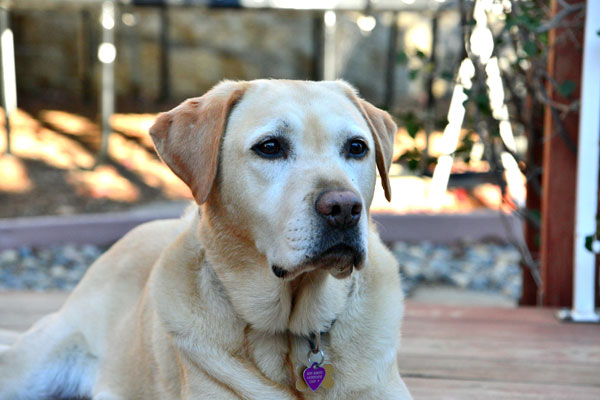
I captured this quickly (my dog was just about to run off) so I didn't have time to achieve the optimal composition. Ideally, I wanted to be much closer.
If I crop out a big chunk of my photo, then I get the image that I was really after.
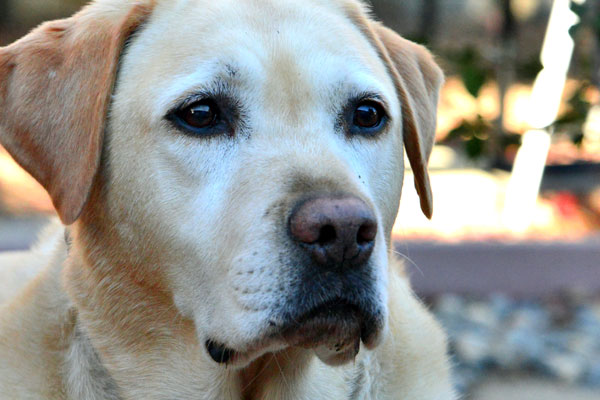
That's better! There's only one problem: because I have cropped out so much of my image, I'm not left with a lot...or am I?
Since the original photo up top had 36 megapixels for me to work with, the cropped image still has 5.5 megapixels. This means that I can still make a 9x12 print of the bottom image if I so desire.
THIS is the reason why having more megapixels gives you more flexibility to edit your images, and why a D5200 might be more appealing to you than a D5100.
Of course, if you're going to capture each photo perfectly (and you ARE, right?) then there's no need for all this cropping and fiddling around. Unless there are some other Nikon D5200 features that you find especially appealing, either camera will suit you fine.
Where Do I Go From Here?
Join Our Community!
- Learn more about your digital SLR camera
- Get other opinions about camera models
- Share your photos and get feedback
- Learn new DSLR tips and tricks
